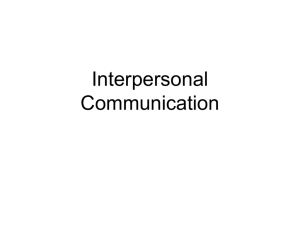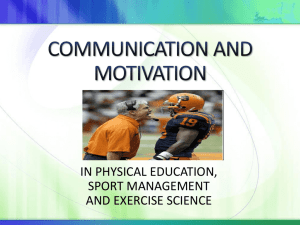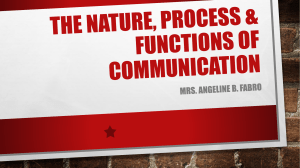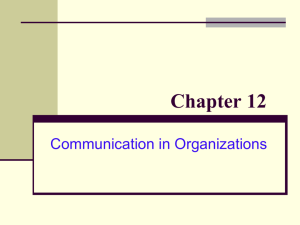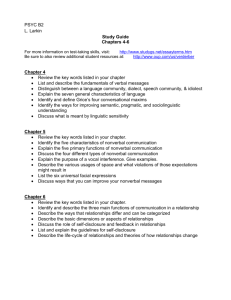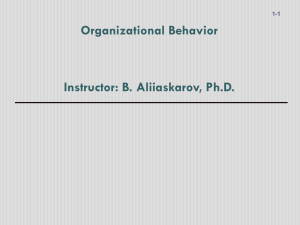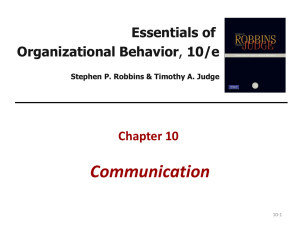Chapter 12 - Cengage Learning
advertisement
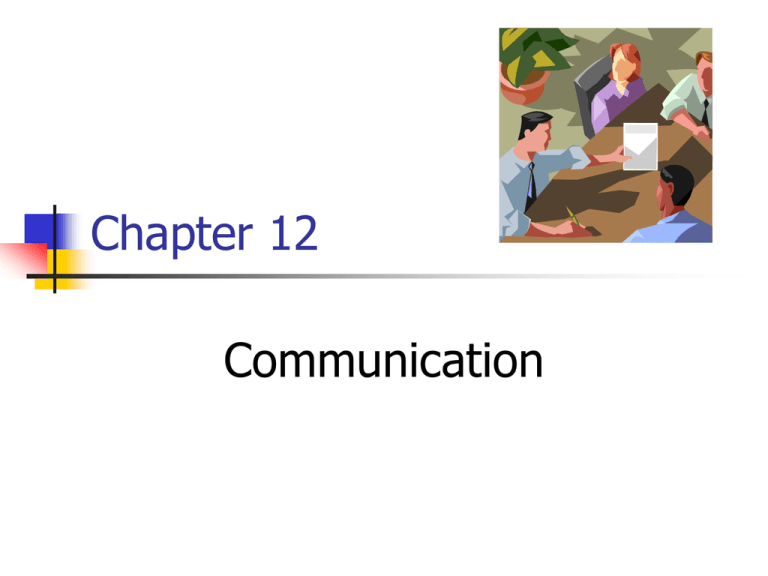
Chapter 12 Communication The Communication Process Noise Encoding Communication Media Decoding Noise 2 Aspects of Nonverbal Communication Hand and body gestures 2. Facial expressions and movements 3. Posture 4. Body placement 5. Voice quality 6. Clothing, dress, and appearance Note: All of the above can be ambiguous. 1. 3 Formal Communication Channels Organization chart shows formal paths Meetings of all sizes Web log initiated by the company RSS (really simple syndication) enhances formal communication Management by walking around (yet also informal channel) 4 Informal Communication Channels Created from informal communication networks Leaders use informal networks to accomplish their goals Chance encounters between managers and employees enhance communication Rumors and gossip travel on grapevine 5 Four Vehicles for Upward Communication Open-door policy (“Let’s talk.”) Town hall meetings (“Let’s work it out.”) Complaint program and hotlines. (“I’ve been harassed.”) Web logs and blogs (“Here’s my reaction to the downsizing.”) 6 Organization Learning Skilled at creating, acquiring, and transferring knowledge based on good communication. Knowledge management gets right knowledge to right people at right time. Knowledge in peoples’ head must be systematized. A problem is that workers hoard ideas. 7 Communication Barriers 1. 2. 3. 4. 5. 6. 7. Low motivation and interest Inappropriate language Defensive communication Insufficient nonverbal communication Information overload Poor communication skills Electronic communication problems 8 Overcoming Communication Barriers 1. 2. 3. 4. 5. Understand the receiver (strive for understanding). Communicate assertively and directly. Use two-way communication and ask for clarification. Elicit verbal and nonverbal feedback. Enhance listening skills (active listening helps). 9 Overcoming Communication Barriers, continued 6. 7. 8. Unite with a common vocabulary (units may speak in different terms). Be sensitive to cultural differences (e.g., use straightforward language and speak clearly). Engage in metacommunication (communicate about your communication). 10 How to Conduct an Effective Meeting 1. 2. 3. 4. 5. Meet only for valid reasons. Start and stop on time, refreshments. Keep comments brief and to the point. Avoid electronic distractions (agree on use of laptops, cell phones, and BlackBerrys). Capitalize on technology when appropriate. 11 How to Conduct an Effective Meeting, continued 6. 7. 8. 9. Encourage critical feedback and commentary. Strive for wide participation. Solve small issues ahead of time with e-mail. Consider “huddling” when quick action is needed. 12 Ethical Political Tactics 1. 2. 3. 4. 5. 6. Develop power contacts (golf is good). Be courteous, pleasant, and positive. Create a positive image. Ask satisfied customers to contact your boss. Be politically correct. Send thank-you notes to many people. 13 Control of Negative Organizational Politics 1. 2. 3. 4. Be aware of presence of politics. Open communication (“Here’s how you get promoted around here.”) Avoid favoritism (“My boyfriend gets only the bonus he deserves.”) Find a way to talk about territorial games (“No hogging resources.”) 14

